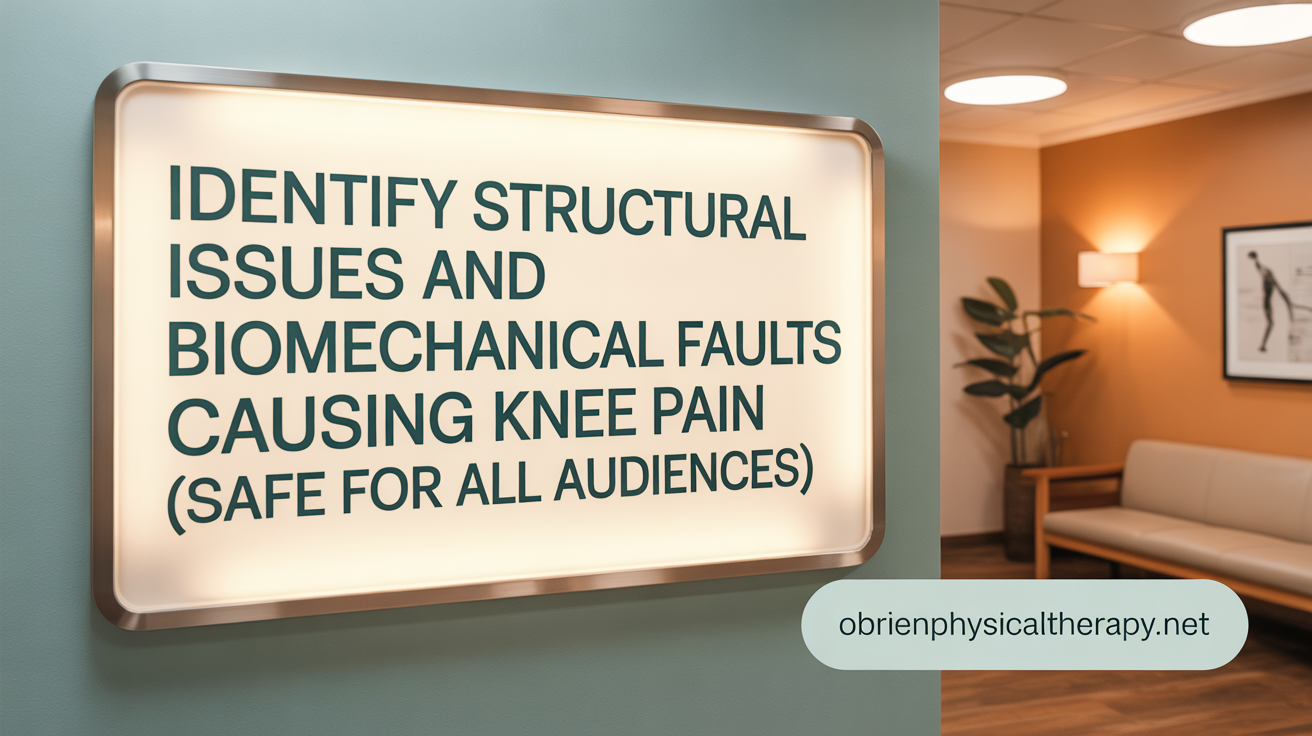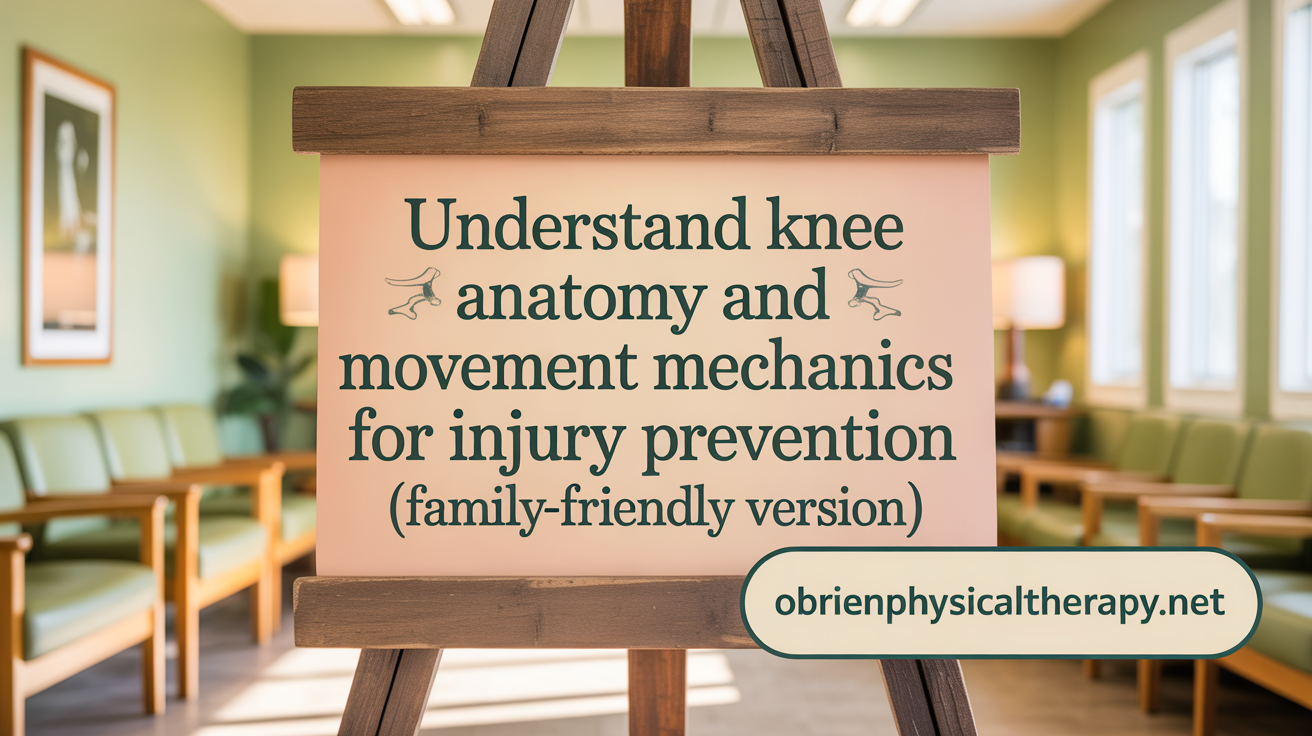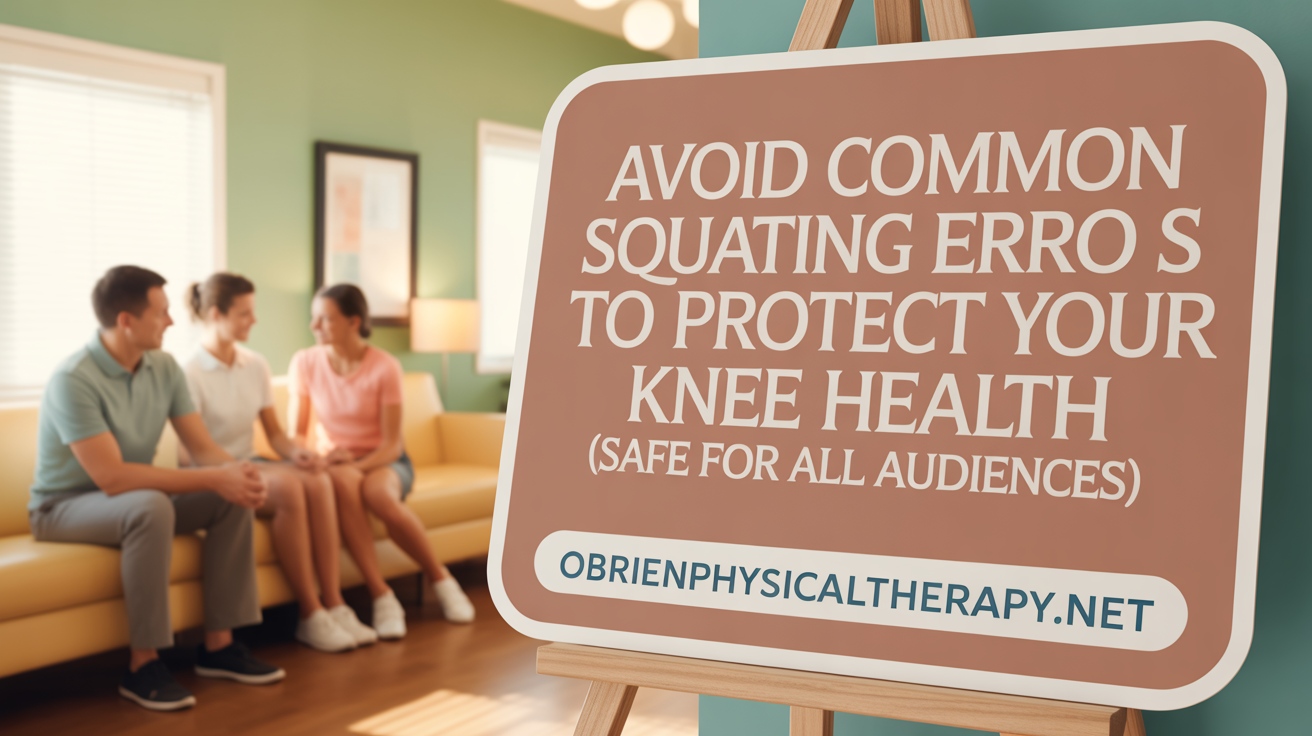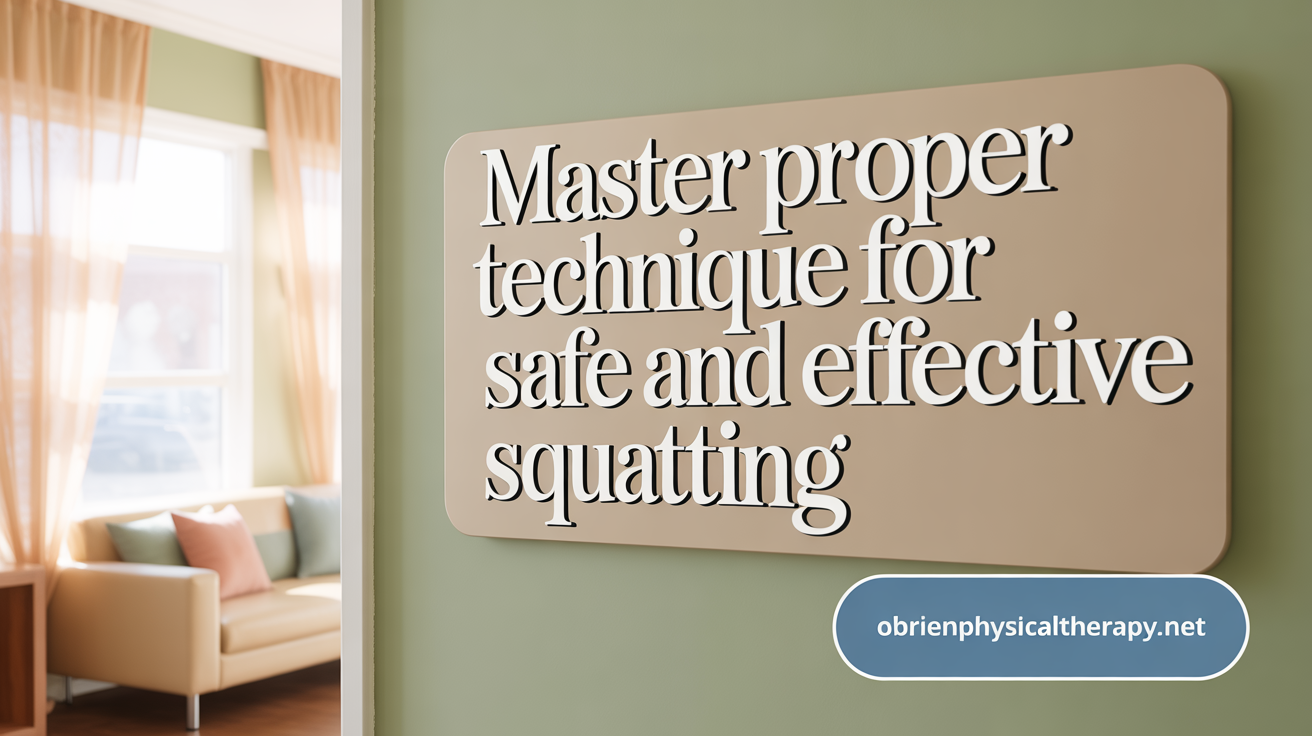Introduction to Knee Pain in Squatting
Squatting is a fundamental exercise that engages multiple muscle groups and joints, particularly the knees. Despite its benefits, many individuals experience knee pain during squatting, which can stem from various causes ranging from poor technique to underlying medical conditions. This article explores the common causes, symptoms, anatomical and biomechanical contributors, diagnostic methods, treatment options, and preventive strategies related to knee pain when squatting. By understanding these factors, readers can learn to squat safely, manage discomfort effectively, and maintain long-term knee health.
Common Causes of Knee Pain When Squatting

What are the common causes of knee pain when squatting?
Knee pain during squatting often results from a range of injuries, conditions, and biomechanical issues. One of the most common culprits is ligament sprains or tears, such as tears to the ACL or MCL, which cause immediate sharp pain and instability. Meniscus tears, damage to the shock-absorbing cartilage inside the knee, frequently cause pain, swelling, and a locking or catching sensation during movements like squatting.
Cartilage degeneration, commonly seen in osteoarthritis, leads to pain, stiffness, and increased friction in the joint, making deep squats uncomfortable. Structural misalignments, such as patellofemoral syndrome (runner’s or jumper’s knee), lead to pain around or behind the kneecap, especially during activities involving knee bending.
Overuse injuries like patellar tendinitis—also called jumper’s knee—result from repetitive stress on the patellar tendon, causing soreness below the kneecap. Iliotibial band syndrome, characterized by tightness and friction of the band running along the outer thigh, can also cause lateral knee pain.
Poor squat technique, muscle imbalances especially weak quadriceps or glutes, and limited ankle mobility contribute to abnormal knee tracking and stress. Overloading these unsupported muscles or performing deep or improper squats can further exacerbate pain.
Trauma from accidents or sports injuries adds to the list, often leading to knee swelling, bruising, or structural damage requiring medical intervention. Joint inflammation such as bursitis or bacterial joint infection can cause pain and swelling.
Preventative measures like proper warm-up, strength training, flexibility exercises, and correct form are essential in reducing the risk of knee pain. If pain persists, consulting a healthcare professional ensures accurate diagnosis and appropriate treatment, which may include physical therapy, rest, ice, compression, or medication.
Symptoms Associated With Knee Pain During Squats
 Knee pain during squatting often presents with a variety of symptoms that can help identify the underlying issue. Typically, individuals may notice a dull, aching, or sometimes sharp pain concentrated around or behind the kneecap. This discomfort tends to be more pronounced during bent-knee positions, such as when lowering into a squat or going upstairs.
Knee pain during squatting often presents with a variety of symptoms that can help identify the underlying issue. Typically, individuals may notice a dull, aching, or sometimes sharp pain concentrated around or behind the kneecap. This discomfort tends to be more pronounced during bent-knee positions, such as when lowering into a squat or going upstairs.
Patients may also experience tenderness in the front of the knee, especially if conditions like patellofemoral pain syndrome are involved. Some common signs include popping, grinding, or clicking noises during movement, which can indicate cartilage wear or meniscus tears.
Swelling and stiffness in the knee joint are frequent symptoms, particularly if inflammation or joint degeneration is present. This can make full extension or flexion difficult, leading to limited movement.
Pain often worsens during activities that put stress on the knee, such as kneeling, sitting for long periods, or climbing stairs. Outer knee pain might suggest iliotibial band syndrome, while localized tenderness could point to tendinitis or ligament injuries.
Signs to watch for also include instability or a feeling that the knee might give out, often seen with ligament injuries or severe meniscus tears. Recognizing these symptoms early and noting their specific locations and character can assist healthcare providers in diagnosing and planning appropriate treatment.
Anatomical and Biomechanical Factors Influencing Knee Pain
 Knee pain during squatting is often linked to underlying anatomical and biomechanical factors that influence joint stability and load distribution. The structure of the knee includes bones like the femur, tibia, and patella, along with ligaments, tendons, and cartilage that work in tandem to facilitate smooth movement. When these structures are misaligned or compromised—such as in cases of joint malformation or ligament integrity issues—there's an increased risk of pain.
Knee pain during squatting is often linked to underlying anatomical and biomechanical factors that influence joint stability and load distribution. The structure of the knee includes bones like the femur, tibia, and patella, along with ligaments, tendons, and cartilage that work in tandem to facilitate smooth movement. When these structures are misaligned or compromised—such as in cases of joint malformation or ligament integrity issues—there's an increased risk of pain.
Biophysical aspects of squatting also play a significant role. For example, trunk inclination forward or tibia tilt can increase the knee flexion moment, which in turn demands more from the quadriceps and other stabilizing muscles. Excessive squat depth or incorrect foot positioning, such as toes pointing outward or inward, can lead to uneven stress across the joint surfaces, heightening the risk of cartilage wear, ligament strain, or tendinitis.
Muscle imbalances further complicate this picture. Weakness in the quadriceps, glutes, or hip stabilizers causes improper tracking of the kneecap (patella), which can lead to patellofemoral pain syndrome. Similarly, tight calf muscles or limited ankle mobility may force the knees into poor tracking patterns during movement, increasing joint stress.
Understanding how these factors interact helps in developing corrective strategies. Modifying your squat technique—like adjusting the stance width, reducing squat depth, or correcting trunk and tibial angles—can reduce abnormal joint loading. Strengthening supporting muscles and enhancing joint flexibility are also vital in alleviating knee pain caused by biomechanical faults.
In summary, whether due to structural abnormalities or movement patterns, an interplay of anatomical and biomechanical factors contributes significantly to knee discomfort during squats. Addressing these issues through proper technique and targeted exercises can help minimize pain and improve overall joint health.
Common Mistakes That Aggravate Knee Pain During Squats

What are the common mistakes that worsen knee pain during squatting?
One of the primary causes of knee pain during squats is improper technique. This includes poor alignment of the knees and hips, knees caving inward, or leaning forward excessively. Such misalignments force the knee joint into unnatural positions, increasing strain and risk of injury.
Another common error is rushing into heavy or high-intensity squats without adequate preparatory work. Sudden increases in load or depth without building strength and mobility can overload the knees, especially if muscles supporting the joint are weak.
Ignoring pain or discomfort while continuing to squat can worsen existing injuries like patellofemoral syndrome or tendinitis. Persistent strain can lead to inflammation, cartilage damage, or ligament injuries.
Footwear also plays a significant role. Wearing unsupportive shoes, or shoes with inadequate grip and cushioning, can alter foot positioning. Poor footwear can misalign the knees and ankles, contributing to pain, particularly in individuals with joint issues such as osteoarthritis.
The importance of a proper warm-up and mobility exercises cannot be overstated. Neglecting these prepares the joint for movement, enhances flexibility, and reduces the risk of sudden strain or overstretching during squats.
Correcting these errors involves focusing on proper squat form, gradually increasing weight and depth, wearing appropriate supportive footwear, and ensuring complete warm-up and stretching routines. Addressing these common mistakes can significantly reduce knee discomfort and improve overall squat performance.
Proper Squatting Techniques to Prevent Knee Pain and Injuries

What are the proper squatting techniques to prevent knee injuries and pain?
Maintaining correct form during squats is crucial for protecting the knees from unnecessary stress. The proper technique starts with keeping the knees aligned directly over the toes throughout the movement. This prevents the knees from caving inward, which is a common mistake that can lead to joint strain.
Keeping the back straight and engaging the core stabilizes the spine and distributes weight evenly across the hips and legs. When descending into the squat, it’s important to bend the hips and knees gradually, ensuring the thighs are parallel to the ground or lower, depending on flexibility and comfort. Employ supports like wall squats or box squats if experiencing discomfort or joint issues like arthritis.
Adjusting your stance can influence knee health. A shoulder-width stance typically provides a stable base, while turning the toes outward slightly (about 15 degrees) can reduce tension on the knees and improve mobility. Progressive overload—gradually increasing the depth, weight, and repetitions—allows your muscles and joints to adapt safely.
Wearing supportive footwear with good cushioning and grip also helps maintain stability. Mobility exercises targeting the hips and ankles, such as hip circles or ankle dorsiflexion stretches, enhance joint range of motion and minimize compensatory movements that can hurt the knees.
If knee pain continues despite correct form, consider modifying your squat regime. Focus on posterior chain exercises like hip bridges or split squats, which strengthen muscles supporting the knees. Temporarily reducing squat depth or frequency and seeking guidance from a physical therapist can ensure safe progression and prevent injuries.
In summary, adherence to proper technique—keeping knees aligned with toes, maintaining an upright torso, engaging core muscles, and gradual progression—along with supportive equipment and mobility work, forms the foundation of safe squatting practices that protect your knees.
Diagnosing Knee Pain: Medical Insights and Evaluations
Knee pain caused by squatting can be diagnosed through a blend of thorough patient history, physical examination, and advanced imaging techniques. The initial step involves listening to the patient's description of pain, its onset, duration, and any associated activities or injuries. During the physical exam, healthcare providers assess joint stability, range of motion, swelling, tenderness, and alignment to identify possible issues like cartilage wear, ligament damage, or soft tissue inflammation.
Imaging studies play a crucial role in deepening the understanding of the injury. X-rays can reveal bony abnormalities, arthritis, or joint degeneration, while MRI scans provide detailed images of soft tissues such as ligaments, tendons, menisci, and cartilage. These images help pinpoint structural problems like meniscus tears, ligament sprains, or early signs of osteoarthritis.
Medical explanations for knee pain during squatting often revolve around tissue inflammation, cartilage deterioration, or biomechanical misalignments. Common conditions include patellofemoral pain syndrome, which results from improper tracking of the kneecap, tendinitis caused by overuse or inflammation of tendons, meniscus tears following twisting injuries, or bursitis due to inflammation of the bursae in the joint.
Biomechanical factors are also significant. Poor squat technique, muscle imbalances between the quadriceps and glutes, or misaligned joints can increase stress on knee structures, leading to pain. For example, weak gluteal muscles can allow the knees to cave inward during movement, exacerbating joint strain.
A comprehensive diagnosis aims to identify the exact cause of pain—whether it's acute injury, overuse, or degenerative changes—and to rule out severe damage requiring surgical intervention. Accurate diagnosis guides targeted treatment options such as physical therapy, strengthening and stretching exercises, activity adjustments, or in some cases, surgical repair. Understanding the specific tissue involved and the movement dysfunctions involved provide vital explanations for why pain occurs during squatting and aid in devising effective, personalized management plans.
Treatment and Rehabilitation Strategies for Knee Pain
When experiencing knee pain from squatting, the first step is to identify the underlying cause, such as patellofemoral pain syndrome, tendinitis, osteoarthritis, meniscus tears, or ligament injuries. Treatment varies based on these conditions, but generally focuses on reducing inflammation, strengthening supporting muscles, and correcting movement patterns.
One of the most effective approaches is targeted physical therapy. Therapists guide patients through exercises aimed at strengthening the glutes, quadriceps, and hamstrings. Stronger muscles help stabilize the knee joint, improve alignment, and distribute forces evenly during squats, reducing strain.
Stretching tight muscles, particularly the hamstrings, quadriceps, and calf muscles, enhances flexibility and reduces tension on the knee. This combined with mobility exercises improves joint function and minimizes discomfort.
Immediate self-care measures include the RICE method — rest, ice, compression, and elevation. Rest prevents aggravation, while ice helps reduce swelling and inflammation. Compression wraps support the knee, and elevating the limb aids in fluid drainage.
Gradually reintroducing activity with proper technique is crucial. Avoid high-impact movements initially, and focus on low-impact exercises like wall sits or stationary cycling. Correcting squat mechanics—such as keeping knees aligned over toes, maintaining a neutral spine, and engaging core muscles—can prevent further injury.
In cases where pain persists or worsens despite self-care, a healthcare professional’s evaluation becomes necessary. They may recommend imaging tests like X-rays or MRIs, injections, or in some cases, surgical interventions to repair damaged tissues.
Incorporating these strategies into a consistent rehabilitation plan can restore knee function, alleviate pain, and help return to normal activity levels, preventing future injuries.
For further support, searching for “treatment for knee pain during squatting” online can provide additional resources and expert advice tailored to specific conditions.
Preventive Techniques and Education for Knee Health in Squatting
What preventive techniques and educational strategies can reduce the risk of knee pain related to squatting?
Preventing knee pain during squats primarily involves mastering proper technique and implementing supportive exercises. Learning the correct form is essential; this includes keeping the knees directly above the toes, avoiding knees caving inward, and maintaining an upright torso. Using a mirror or recording your squats can help ensure proper alignment and position.
Strengthening the muscles around the knee—particularly the quadriceps, hamstrings, glutes, and calves—helps distribute the load evenly and provides stability, reducing undue stress on the joint. Engaging in targeted exercises like glute bridges, leg presses, and calf raises complements squat training and supports overall knee health.
A well-rounded warm-up routine that includes light cardio and dynamic stretches prepares the muscles and joints for activity. Exercises such as leg swings, bodyweight lunges, and ankle circles increase mobility and blood flow, reducing injury risk. Post-workout static stretching of the quadriceps, hamstrings, and hip flexors maintains flexibility and prevents tightness that can alter joint mechanics.
Gradually increasing the intensity and volume of squats is vital. Starting with shallow squats or using supports like resistance bands and weight plates under heels can help improve form and prevent overloading the knees. Wearing supportive, cushioning footwear ensures proper shock absorption during movement.
Additionally, modifying squat depth to avoid excessive strain—such as limiting to a half or parallel squat—can protect the knees, especially for beginners or those with existing issues. Consulting with a physiotherapist or certified trainer helps tailor exercises to individual capabilities and conditions, further reducing the risk of pain.
Informed education about proper biomechanics, avoiding rapid or jerky movements, and recognizing early signs of discomfort are important. Recognizing these signs early allows for immediate adjustments in technique or activity levels, preventing the progression to injury.
By integrating these strategies—proper technique, strengthening, warm-up routines, and gradual progression—individuals can significantly lower their risk of knee pain associated with squatting and promote joint longevity.
Impact of Muscle Weakness and Imbalances on Knee Pain
How do muscle weakness and imbalances affect knee pain during squatting?
Muscle strength and balance play a vital role in supporting the knee joint during activities like squatting. Weak muscles can lead to improper alignment and increased strain on the knee, resulting in pain and discomfort.
Why is glute strength important for knee health?
The gluteal muscles, especially the gluteus maximus and medius, are crucial in stabilizing the hips and knees. Weak glutes can cause the knees to cave inward, a movement known as knee valgus, which places extra pressure on the knee joint. This misalignment can lead to pain and increase vulnerability to injuries.
What role do the quadriceps play?
The quadriceps are the primary extensor muscles of the knee. Weak or tight quadriceps can cause uneven forces across the knee, leading to issues like patellofemoral pain syndrome or tendinitis. Strengthening these muscles helps improve knee stability and reduces pain.
How do hip muscles contribute?
Strong hip muscles, including the hip abductors and external rotators, help maintain proper lower limb alignment during squatting. Imbalances or weakness in these muscles can cause abnormal movement patterns, stressing the knee joint.
What exercises can address these weaknesses?
Targeted exercises such as hip thrusts, glute bridges, clamshells, banded lateral walks, and single-leg squats can improve glute and hip strength. To strengthen quadriceps, leg presses, step-ups, and wall sits are effective. Properly addressing these imbalances can significantly reduce knee pain during squats.
How to search for more information?
Looking up terms like 'muscle imbalances and knee pain in squatting' can provide additional insights and tailored strategies for managing and preventing knee discomfort caused by muscular issues.
Modifications and Supportive Measures for Managing Knee Pain
What modifications can help reduce knee pain during squats?
Adjusting your squat technique is essential for minimizing knee stress. For example, elevating heels slightly by using weight plates or specialized shoes can improve ankle mobility and reduce knee forward movement. Ensuring knees stay aligned over toes and avoiding excessive depth that causes discomfort can also aid in pain prevention.
Incorporating stretching routines for the quadriceps, hamstrings, and calves can enhance flexibility, helping maintain proper form and lessen strain. Practicing wall squats or partial squats with proper technique allows gradual strengthening without overloading the joint.
Gradually increasing the squat intensity and volume, instead of jumping into heavy weights, supports joint health and allows muscles and tendons to adapt.
What assistive devices can support knee health?
Knee braces or sleeves, such as the Bauerfeind GenuTrain, offer compression and stability, which may help reduce pain and swelling. These devices also promote blood flow and activate muscles around the joint, providing added support during activity.
Supports should fit properly and be used as part of a comprehensive treatment plan, especially during flare-ups or for individuals with arthritis or ligament injuries.
Are there rehabilitation aids that can facilitate knee recovery?
Strengthening tools like resistance bands and stability balls are effective for targeted exercises, which improve muscle support around the knee. Foam rollers help release tightness in surrounding muscles, like the quadriceps and IT band, decreasing undue pressure.
Mobility aids and physical therapy, guided by healthcare professionals, can assist in restoring proper joint function. Regular use of these aids alongside expert advice supports safe practice and reduces the risk of future knee pain.
Conclusion: Maintaining Knee Health While Squatting
Knee pain during squatting is a multifaceted issue influenced by anatomical, biomechanical, and technique-related factors. By understanding common causes, recognizing symptoms early, and employing proper squatting form alongside targeted strengthening and flexibility exercises, individuals can prevent or reduce knee pain effectively. Prompt diagnosis and tailored treatment are vital for addressing underlying conditions and facilitating recovery. Additionally, adopting preventive measures, including gradual progression, proper warm-ups, and education on biomechanics, plays a crucial role in long-term knee health. With informed practice and professional guidance when necessary, squatting can remain a safe and beneficial exercise for all fitness levels.
References
- Why Do Your Knees Hurt When You Squat? | Hackensack Meridian ...
- Knee pain when bending or squatting | Spire Healthcare
- Knee Pain When Squatting: Causes, Treatment, Prevention, and More
- Why You Might Have Knee Pain When Squatting | Sport Orthopedics
- Knee Pain When Squatting: Causes, Treatment and Prevention
- Knee Pain When Squatting: Causes, Treatments & Option
- If You Have Knee Pain When Squatting, Try This - Hinge Health
- Knee pain from squatting: Causes, prevention, and recovery
